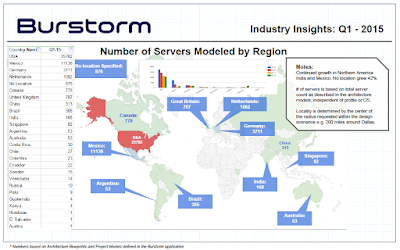Twitter Feed
Review: Executive’s Guide to Cloud Computing by Eric Marks and Bob Lozano
Recently, I had the privilege of reviewing an advance copy of Executive’s Guide to Cloud Computing by Eric Marks and Bob Lozano. Available now for pre-order on Amazon, this guide is a…
DoD Cloud Computing Session at 5th International Cloud Expo
I’m happy to announce that I will be presenting on DoD Cloud Computing Advances at the 5th International Cloud Expo, April 19-21, 2010 at the Javits Convention Center in New…
InformationWeek Prediction: Cloud Computing for Classified Software
Yes, I know you’re sick of all the predictions, but I just can’t resist pointing you to Nick Hoover’s “5 Predictions For Government IT in 2010“. In summary: 1. Cybersecurity…
“Shaping Government Clouds” Just Released
As part of the On The Frontlines series, Trezza Media Group has just released it latest on-line electronic magazine. “Shaping Government Clouds” includes: Pete Tseronis, Chairman of the Federal Cloud…
Fed Tech Bisnow: If Nostradamus Did RFPs?
Nostradamus may no longer be with us, but check out the “beltway” predictions from Tech Bisnow! “Two hot trends almost all mentioned: early uptick on M&A and cloud computing ubiquity”…
Navy CANES and Cloud Computing
During the first quarter of 2010, the Navy is expected to make the first selection for the Consolidated Afloat Network Enterprise System (CANES). CANES is just one component of the…
GovCloud, “Cloud Musings” rated “Influential” by Topsy
Log in with Twitter A search engine powered by tweets My sincere appreciation and thanks goes out to Topsy for rating my tweets as “Influential”! Topsy is a new kind…
Jill Tummler Singer Appointed NRO CIO
Effective January 1, 2010, Jill Tummler Singer will take the reigns as CIO for the National Reconnaissance Office (NRO). As the CIA Deputy CIO, Ms Tummler has been a proponent…
Most Influential Cloud Bloggers for 2009
Thank you Ulitzer and SYS-CON Media for naming me to your list of the most influential cloud computing bloggers for 2009. My hearty congratulations go out to the other bloggers…
2009: The Government Discovers Cloud Computing
2009 was truly a watershed year for Federal information technology professionals. After inaugurating the first Cyber-President we saw the appointment of our first Federal CIO and the rapid adoption of…
as the linking of physical components and boxes together in way that addresses the organization’s needs. With this mindset, they focus on specific technical characteristics and capabilities. While these aspects still remain crucial to a successful deployment, the cloud solution architect must instead, visualize solutions as the linking together of compatible and interoperable services. With this viewpoint, the actual physical components are less of a concern and the service levels and service “-ilities” (maintainability, usability, portability, sustainability, etc.) rise in importance. They also must quantify the business economics of any delivered design. Many times economic aspects alone will define the difference between a new service launch and a new idea left on the shelf.
 |
|
Figure 1– Burnstorm cloud solution modeling software use
|
 |
|
Figure 2– Interactive solution design comparisons
|
( This content is being syndicated through multiple channels. The opinions expressed are solely those of the author and do not represent the views of GovCloud Network, GovCloud Network Partners or any other corporation or organization.)
( Thank you. If you enjoyed this article, get free updates by email or RSS – © Copyright Kevin L. Jackson 2015)
Cloud Computing
- CPUcoin Expands CPU/GPU Power Sharing with Cudo Ventures Enterprise Network Partnership
- CPUcoin Expands CPU/GPU Power Sharing with Cudo Ventures Enterprise Network Partnership
- Route1 Announces Q2 2019 Financial Results
- CPUcoin Expands CPU/GPU Power Sharing with Cudo Ventures Enterprise Network Partnership
- ChannelAdvisor to Present at the D.A. Davidson 18th Annual Technology Conference
Cybersecurity
- Route1 Announces Q2 2019 Financial Results
- FIRST US BANCSHARES, INC. DECLARES CASH DIVIDEND
- Business Continuity Management Planning Solution Market is Expected to Grow ~ US$ 1.6 Bn by the end of 2029 - PMR
- Atos delivers Quantum-Learning-as-a-Service to Xofia to enable artificial intelligence solutions
- New Ares IoT Botnet discovered on Android OS based Set-Top Boxes


